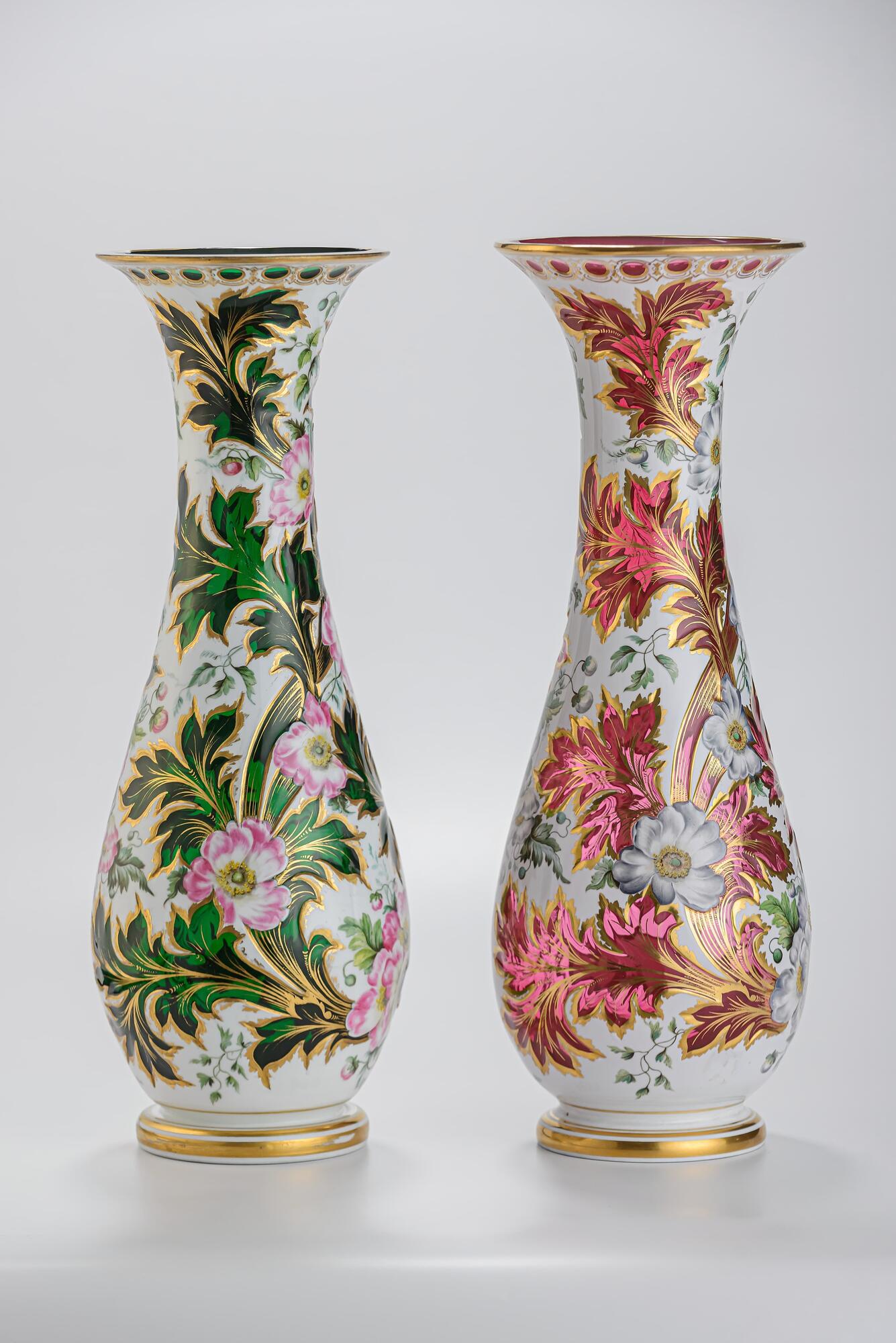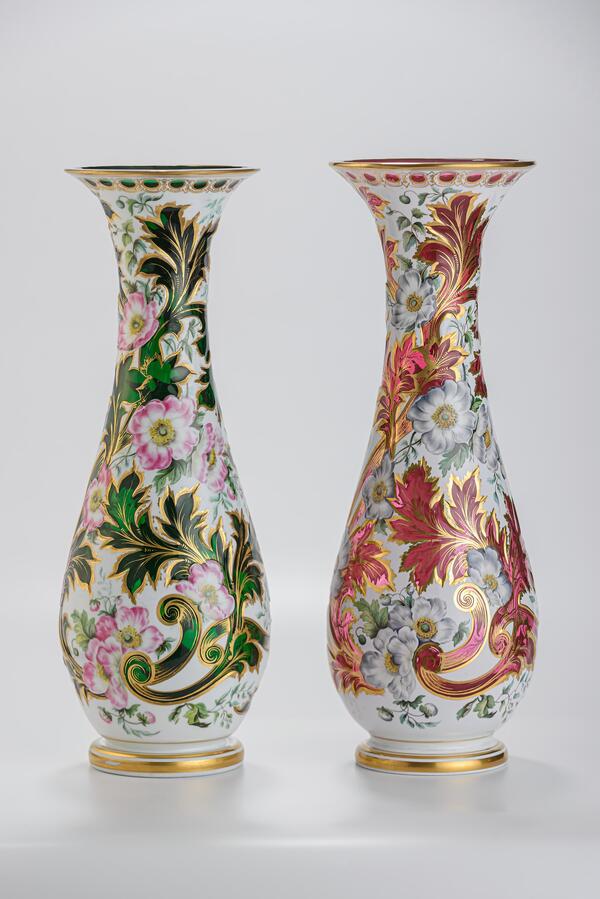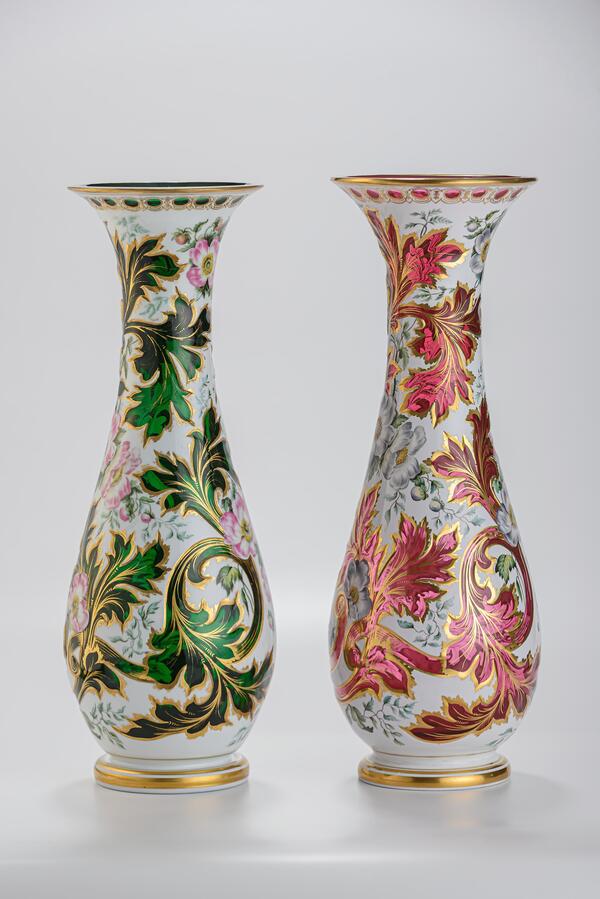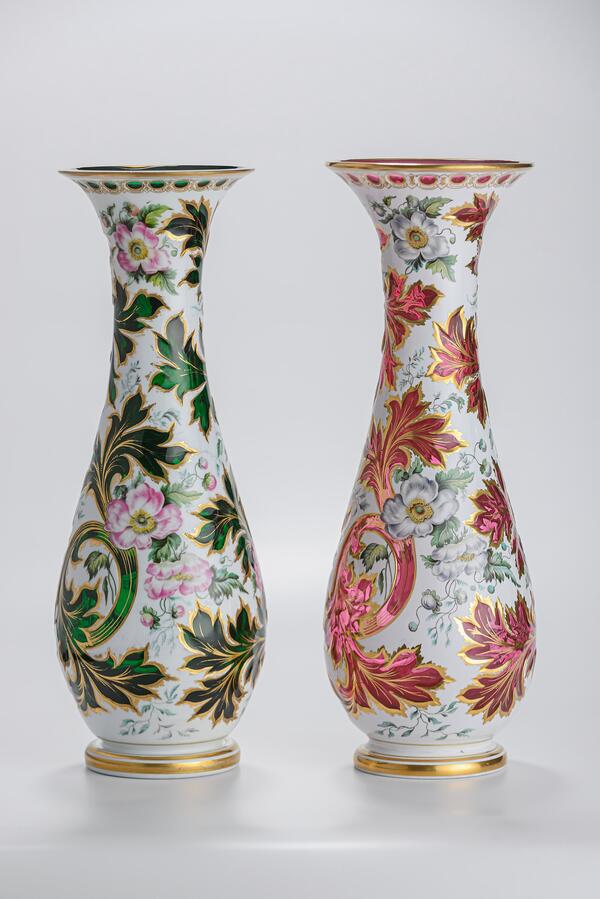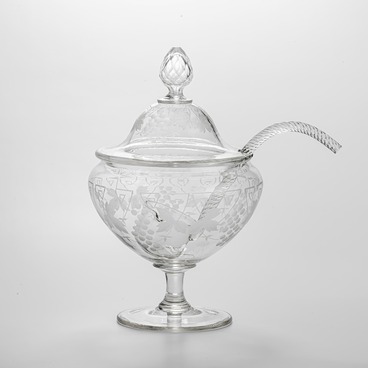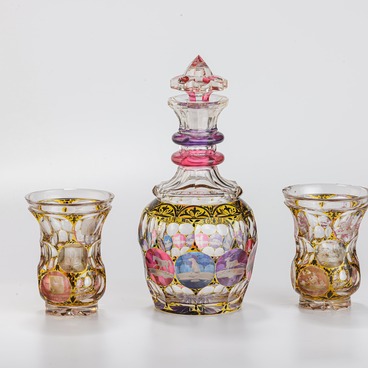Decorative twin vases not only demonstrate the talent of glassmakers, but also tell the story of the Bakhmetevsky factory. In the middle of the 18th century, glassmaking reached an industrial level in Russia, but glassware was still a rarity even in the life of the nobility. In the village of Nikolo-Pestrovka, the serfs of the Bakhmetevs were the main workers of the glass factory. Talented craftsmen quickly mastered various glassmaking techniques, and soon began to manufacture non-traditional high-quality products, decorated with cutting, painting and engraving. In the 1830s, the products of the Nikolsko-Bakhmetevsky factory found demand in the Persian market.
Top-quality glassware was needed to demonstrate form, composition, and decor so that the villagers of Nikolskoye would learn to take after those samples and develop a delicate taste. Such samples and sketches, made by professional Russian and European artists, were regularly supplied to the plant.
The domestic role model was the Imperial Glass Factory in St. Petersburg, the official supplier of glass and crystal products for the Winter Palace and other residences of the royal family. It was from there that Nikolay Alekseevich Bakhmetev, the second owner of the Nikolsky plant, began to bring the samples.
The second source of inspiration was the work of French and Bohemian artisans who had centuries-old glass traditions behind them. European glass was considered the best in quality and decor. It is noteworthy that the factory’s collection housed all copies and replicas, even if they had some kind of shortcomings.
After a while, Bakhmetev’s glassmakers reached such a level that it became impossible to distinguish their products from the original. This is confirmed by the twin vases on display.
Both are made of three-layer applied glass with a teardrop-shaped body that narrows into a bell-shaped throat. Pinnate leaves are delicately cut and outlined in gold, and there is an enamel flower inside. The vases practically do not differ in any way, except for the color: the pink (“golden ruby”) is a sample brought from France, the emerald one was made by the factory craftsmen. Upon a closer look, one more difference can be seen: the French vase is slightly higher than the one made by the Nikolsky artisans.
Top-quality glassware was needed to demonstrate form, composition, and decor so that the villagers of Nikolskoye would learn to take after those samples and develop a delicate taste. Such samples and sketches, made by professional Russian and European artists, were regularly supplied to the plant.
The domestic role model was the Imperial Glass Factory in St. Petersburg, the official supplier of glass and crystal products for the Winter Palace and other residences of the royal family. It was from there that Nikolay Alekseevich Bakhmetev, the second owner of the Nikolsky plant, began to bring the samples.
The second source of inspiration was the work of French and Bohemian artisans who had centuries-old glass traditions behind them. European glass was considered the best in quality and decor. It is noteworthy that the factory’s collection housed all copies and replicas, even if they had some kind of shortcomings.
After a while, Bakhmetev’s glassmakers reached such a level that it became impossible to distinguish their products from the original. This is confirmed by the twin vases on display.
Both are made of three-layer applied glass with a teardrop-shaped body that narrows into a bell-shaped throat. Pinnate leaves are delicately cut and outlined in gold, and there is an enamel flower inside. The vases practically do not differ in any way, except for the color: the pink (“golden ruby”) is a sample brought from France, the emerald one was made by the factory craftsmen. Upon a closer look, one more difference can be seen: the French vase is slightly higher than the one made by the Nikolsky artisans.
